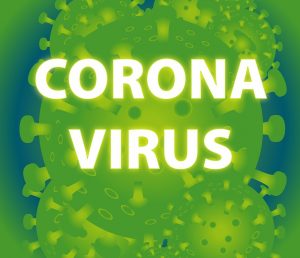What the Data Say About Asymptomatic COVID Infections
 How many people don’t experience any symptoms after becoming infected with SARS-CoV-2? And what is their role in spreading COVID-19? These have been key questions since the beginning of the pandemic.
How many people don’t experience any symptoms after becoming infected with SARS-CoV-2? And what is their role in spreading COVID-19? These have been key questions since the beginning of the pandemic.
Now, evidence suggests that about one in five infected people will experience no symptoms, and they will transmit the virus to significantly fewer people than someone with symptoms. But researchers are divided about whether asymptomatic infections are acting as a ‘silent driver’ of the pandemic.
Although there is a growing understanding of asymptomatic infections, researchers say that people should continue to use measures to reduce viral spread, including social distancing and wearing masks, regardless of whether they have symptoms.
The issue with putting a reliable figure on the rate of asymptomatic COVID-19 is distinguishing between people who are asymptomatic and pre-symptomatic, says Krutika Kuppalli, an infectious-disease researcher at Stanford University School of Medicine in California. “Asymptomatic is someone who never developed symptoms ever throughout the course of their disease, and pre-symptomatic is somebody who has mild symptoms before they do go on to develop symptoms,” Kuppalli says. There is also no standardized accepted definition of that, she says.
Although there is a lower risk of transmission from asymptomatic people, they might still present a significant public-health risk because they are more likely to be out in the community than isolated at home, says Andrew Azman, an infectious-disease epidemiologist at the Johns Hopkins Bloomberg School of Public Health in Baltimore, Maryland, who is based in Switzerland and was a co-author on the study. “The actual public-health burden of this massive pool of interacting ‘asymptomatics’ in the community probably suggests that a sizeable portion of transmission events are from asymptomatic transmissions,” he says.
But other researchers disagree about the extent to which asymptomatic infections are contributing to community transmission. If the studies are correct in finding that asymptomatic people are a low transmission risk, “these people are not the secret drivers of this pandemic”, says Byambasuren. They “are not coughing or sneezing as much, they’re probably not contaminating as much surfaces as other people”.
Muge Cevik, an infectious-disease researcher at the University of St Andrews, UK, points out that because most people are symptomatic, concentrating on identifying them will probably eliminate most transmission events.
Some studies showed that those without symptoms had similar initial viral loads — the number of viral particles present in the blood — when compared with people with symptoms. But asymptomatic people seem to clear the virus faster and are infectious for a shorter period.
The immune systems of asymptomatic individuals might be able to neutralize the virus more rapidly, says Cevik. But that doesn’t mean these people have a stronger or more durable immune response — and there is evidence that people with severe COVID-19 have a more substantial and long-lasting neutralizing antibody response, she says.
Although there is a now a better understanding of asymptomatic infections and transmission of COVID-19, Cevik says that asymptomatic people should continue to use measures that reduce viral spread, such as social distancing, hand hygiene and wearing a mask.
Excerpted from “What the Data Say About Asymptomatic COVID Infections” in Nature. Read the full article online.
Source: Nature | What the Data Say About Asymptomatic COVID Infections, https://www.nature.com/articles/d41586-020-03141-3 | © 2020 Springer Nature Limited
Do you need someone to talk to? CHC can help. We invite you to call or email our Care Managers at 650.688.3625 or careteam@chconline.org to set up a free 30-minute consultation. CHC teletherapy services are available now.





